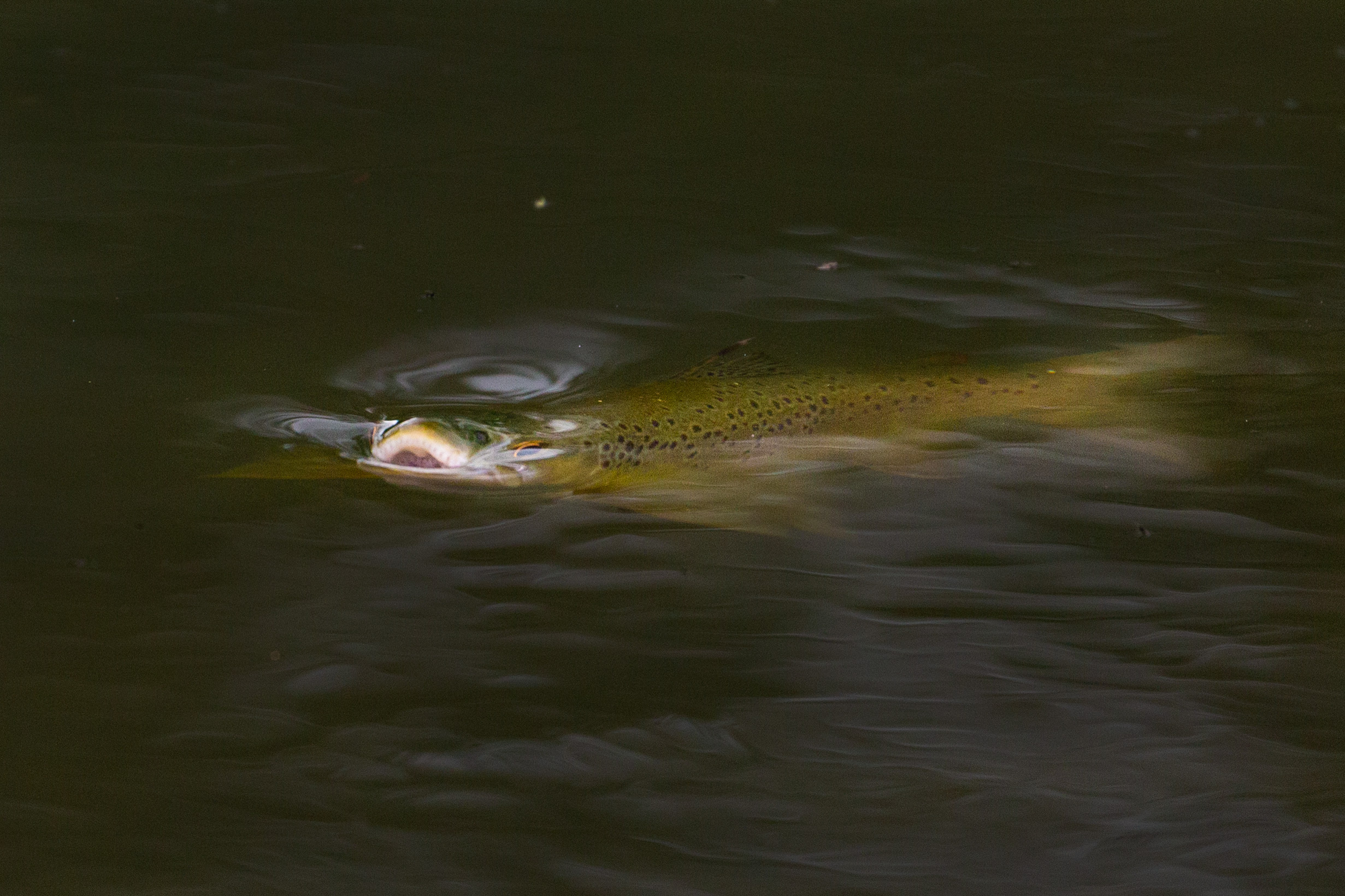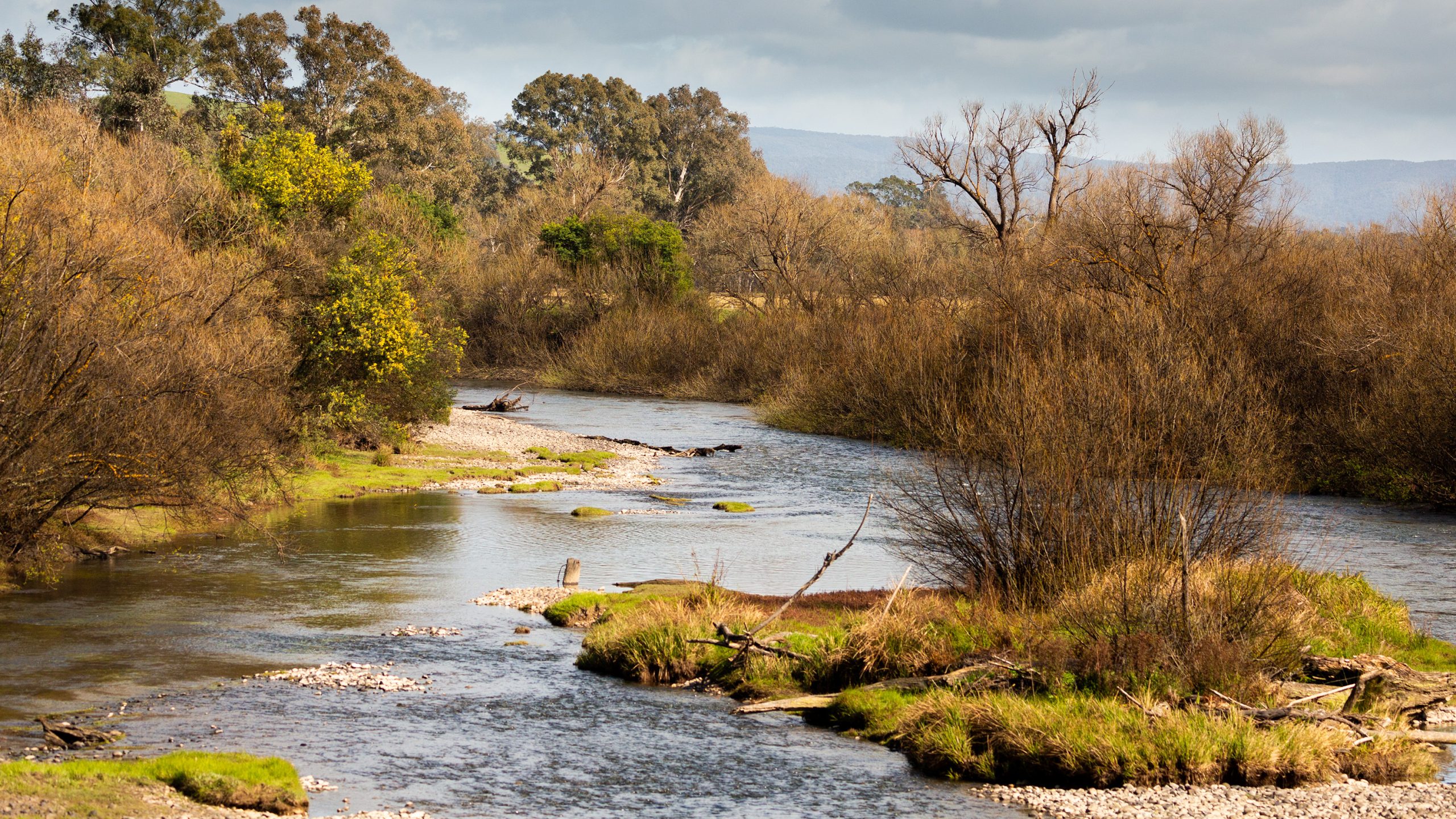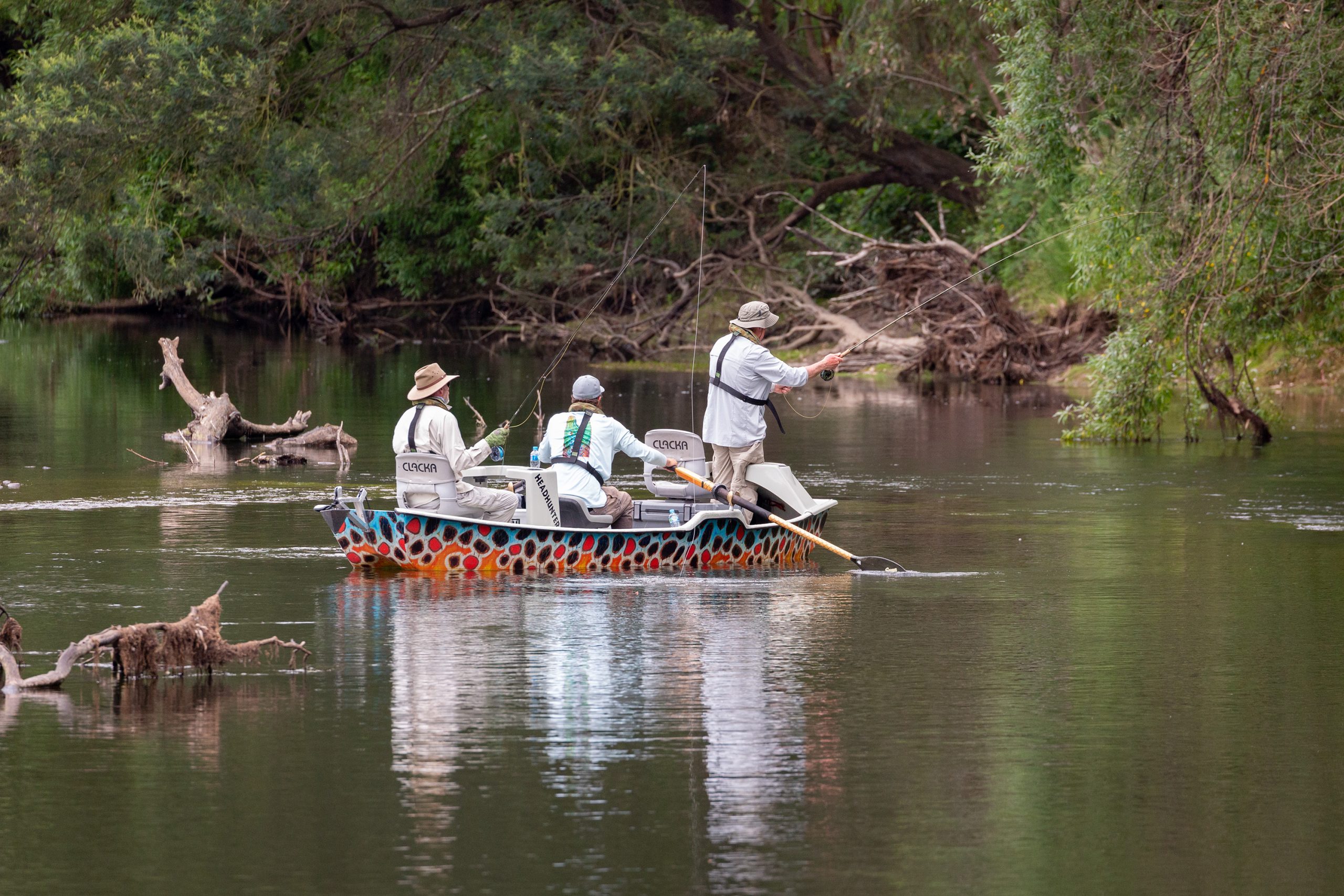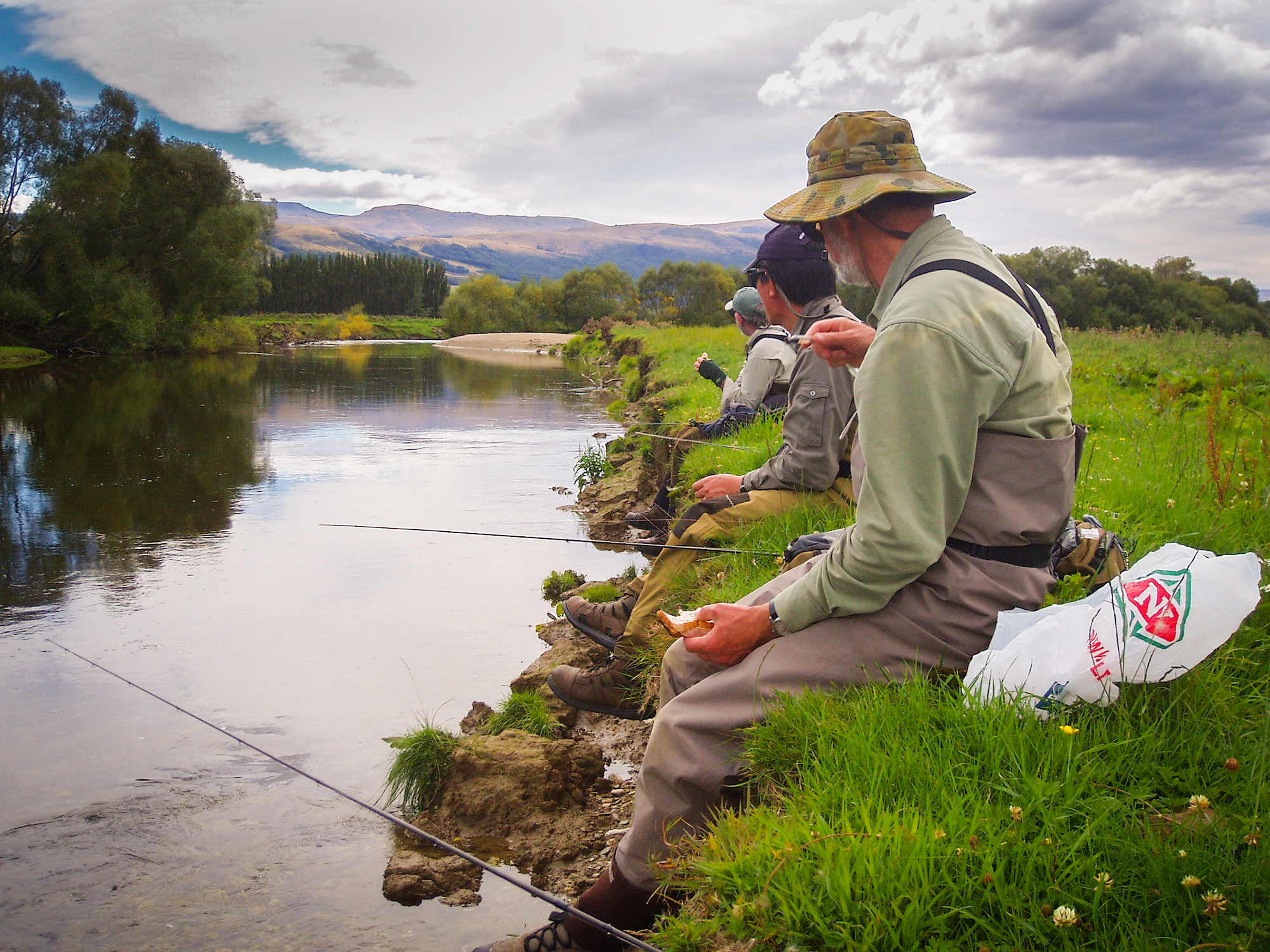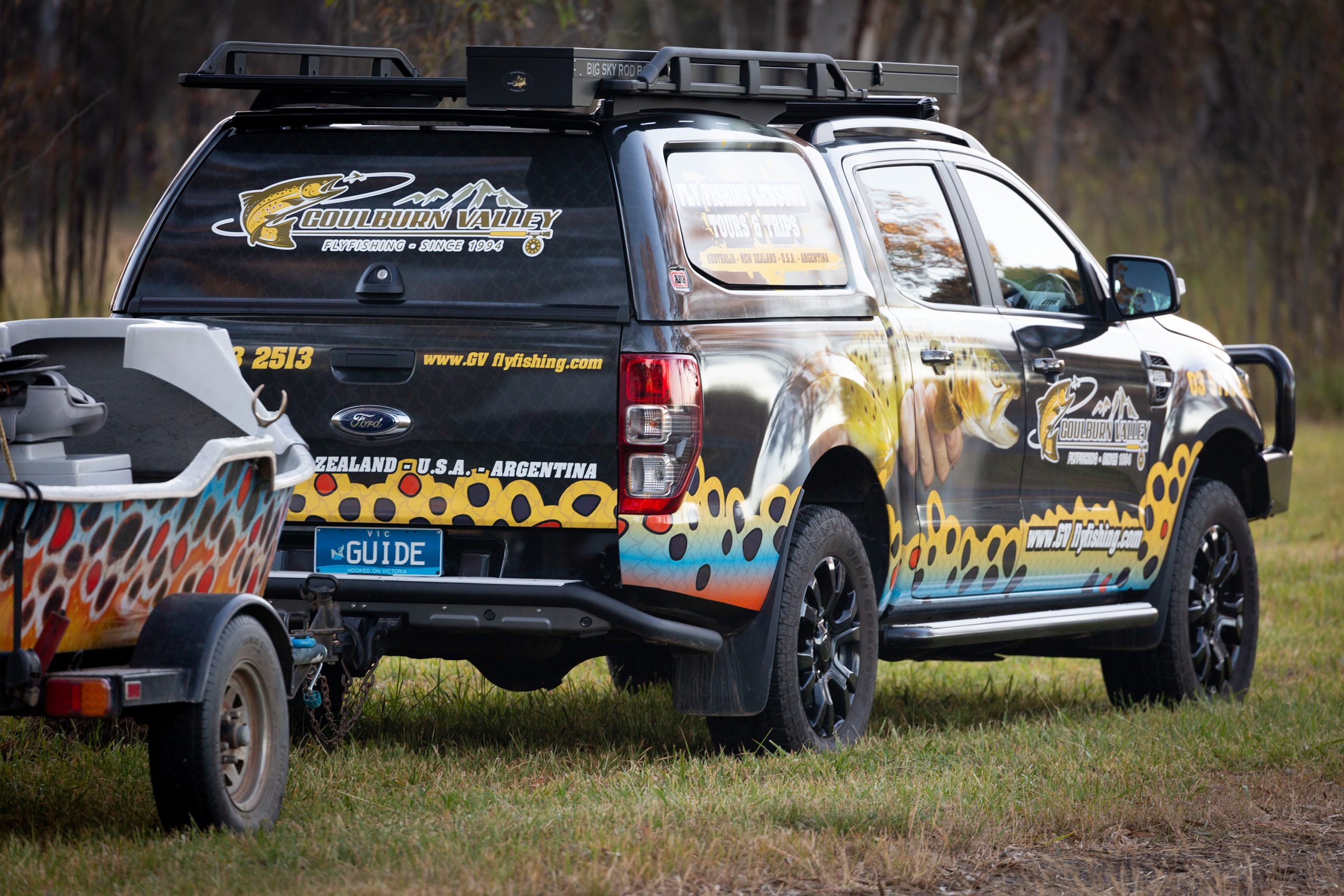Montana Dispatch – Part II:
Part II: The Tension and Release of Dillon – Beaverhead, Big Hole & Ruby
By Anthony Boliancu
After four days of drifting the broad, steady flows of the Missouri, we packed the vehicles and turned south. Within a couple of hours, the canyon walls gave way to something altogether different-big sky desert plains, sagebrush flats, and long ridgelines that rose abruptly from the grasslands. It was a striking shift in geography. Gone were the fir-lined cliffs of Craig; in their place, Dillon unfolded with a sense of space and dryness – more ranchland than river valley.
Our base here was a renovated barn a few miles out of town – an upstairs loft with all the comforts: hot showers, solid beds, gear space, and a long porch that opened up to views of the surrounding mountains. At night, with a glass of whiskey or red wine in hand, we’d sit out there and watch the colours change over the distant peaks. Somewhere between cowboy country and trout camp, it felt just right.
The Beaverhead – Precision Required
Fishing the Beaverhead is like operating on a smaller canvas, but with finer brushes. It’s technical water, tight and sometimes claustrophobic, with dense banks and narrow drifts. At first glance, it seems unremarkable – a low, spring-fed tailwater meandering through farmland. But don’t be fooled. It holds some of the largest fish we encountered on the entire trip.
Just below Clark Canyon Dam, we ran classic bobber rigs – double nymphs with a touch of weight and subtle indicators. It wasn’t elegant, but it was devastatingly effective. Trophy fish came steadily to hand, one after the other. The kind that make even experienced anglers second-guess their hooksets.
Further downstream, near Barretts and beyond, things changed. The water widened and shallowed, with long grassy margins. Hoppers came into play. We didn’t see the full emergence of the PMDs or caddis, but even on the shoulder of the hatch, the dry fly potential was obvious. Big fish lurked in skinny water, and when they committed to a hopper-mouth wide, slow rise, back breaking the surface-it was electric.
One moment that stands out was a fish that took an emerger, then turned right around and sipped the dry as it trailed behind. Two eats in one drift, clear as day, in water barely knee-deep. It was like watching a slow-motion lesson in trout behaviour.
The Big Hole – Moving Water, Moving Hearts
The Big Hole was a different beast altogether. With hoot owl restrictions in place by late July, we set alarms for 4:45am and were on the water shortly after first light. These early starts brought their own kind of magic. Mist rising off the river. Birds cutting across the valley. That cool, lavender light that only exists for a few minutes in the Montana dawn.
The Big Hole gave us fast pocket water and room to wade. It felt wild-less tailwater, more freestone energy. We fished dries where we could, streamers when the water called for it, and got some solid fish to hand. The scenery here left a mark. Towering cliffs, old buffalo jump sites, and long grassy meadows that whispered stories older than any of us.
One morning, just as the sun crested the ridgeline, we landed a thick brown that had tucked itself tight behind a boulder. A textbook rise, a perfect cast, and a clean eat. But it wasn’t just the fish-it was the light, the air, the moment. It reminded us why we come all this way.
The Ruby – Delicate Negotiations
The Ruby was fickle but beautiful. We only had one session on this smaller, trickier river, but it was enough to glimpse its personality. A mix of overgrown banks, tight casts, and crystal-clear runs made for some nerve-wracking sight-fishing. Browns would hover mid-column, slowly shifting in and out of view, requiring absolute precision to fool.
This was fly fishing at its most intimate: light leaders, subtle drifts, and no room for error. We didn’t catch many, but the few that came to hand felt earned. Hard-earned.
The Dillon Vibe
Back in town, the days wrapped up with classic Americana: burgers and beers at Sparky’s Garage, steak nights at The Den, and the kind of conversation that only happens when a group of anglers is three rivers deep into a trip. Talk turned to rod action, leaders, tippet sizes – and eventually drifted into politics, history, and home.
There’s something grounding about this middle leg of the journey. The Missouri introduces you to Montana’s grandeur. Yellowstone delivers its epic final act. But Dillon? Dillon is where you settle into the rhythm of the trip. Where the fish don’t come easy, and that’s part of the point.
It’s also where the relationships start to deepen. Guiding days gave each angler a chance to fish with each member of the group and work on specific goals – mending techniques, reading micro-currents, changing fly strategy based on water depth or clarity. There were personal breakthroughs. Quiet moments. Shared frustration. And laughter. Always laughter.
Weather, Water, and What Comes Next
Despite it being mid-summer, the weather remained unusually mild. Most days sat in the mid-20s, with just a couple nudging past 30°C. This meant comfortable fishing and fish that stayed active throughout the morning. We watched the sun arc across big Montana skies and felt time slow down.
In just a few days, we’d be packing the vehicles again – headed towards the final leg: Henry’s Lake and the west entrance to Yellowstone National Park. But before that, we soaked in Dillon for all it was: quiet, challenging, expansive. A place where you don’t just fish – you learn.
Coming up in Part III: Yellowstone’s upper reaches, the famed Madison River, and high alpine creeks that test your timing, presentation, and patience.


















